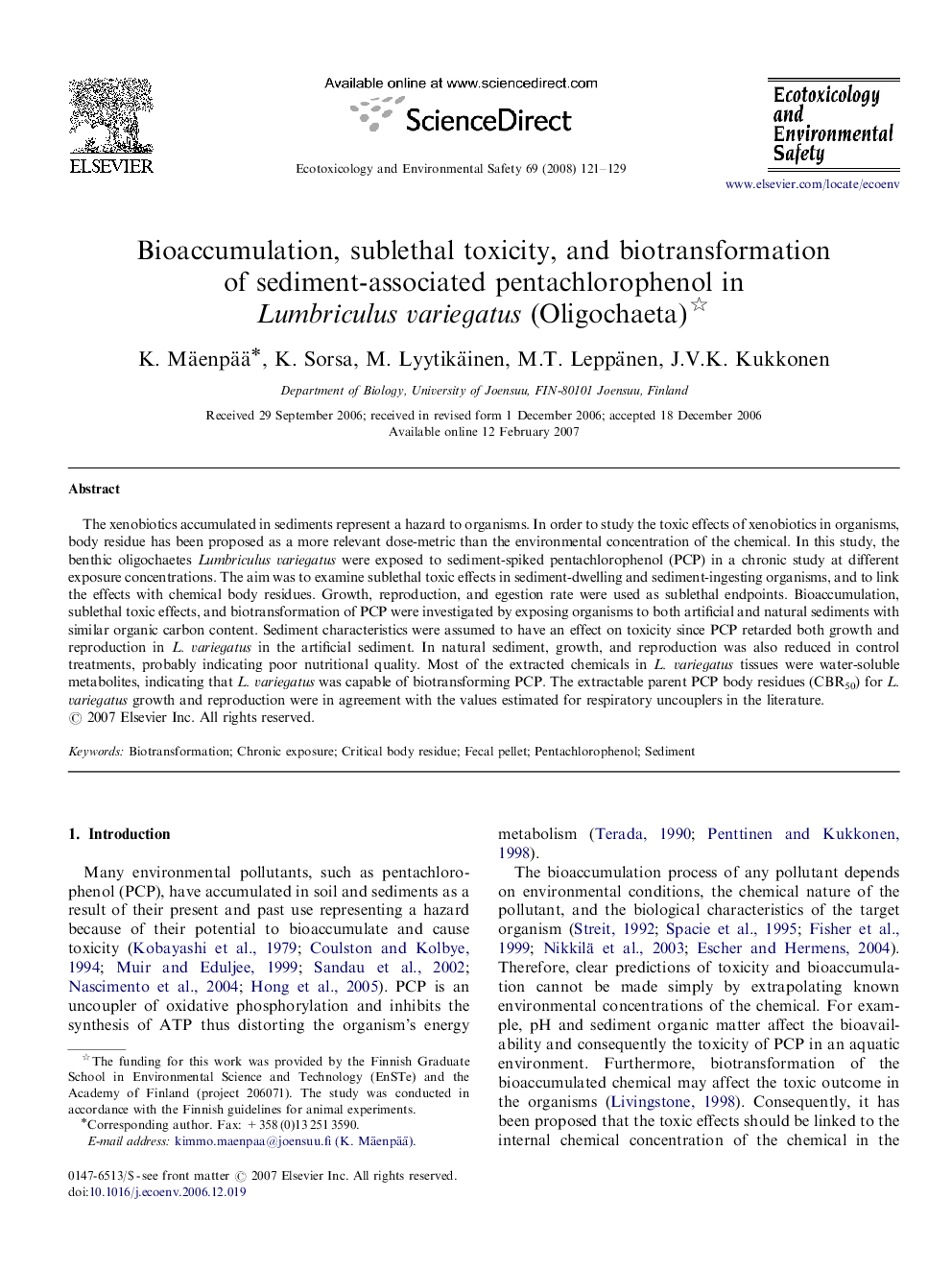| Article ID | Journal | Published Year | Pages | File Type |
|---|---|---|---|---|
| 4422272 | Ecotoxicology and Environmental Safety | 2008 | 9 Pages |
The xenobiotics accumulated in sediments represent a hazard to organisms. In order to study the toxic effects of xenobiotics in organisms, body residue has been proposed as a more relevant dose-metric than the environmental concentration of the chemical. In this study, the benthic oligochaetes Lumbriculus variegatus were exposed to sediment-spiked pentachlorophenol (PCP) in a chronic study at different exposure concentrations. The aim was to examine sublethal toxic effects in sediment-dwelling and sediment-ingesting organisms, and to link the effects with chemical body residues. Growth, reproduction, and egestion rate were used as sublethal endpoints. Bioaccumulation, sublethal toxic effects, and biotransformation of PCP were investigated by exposing organisms to both artificial and natural sediments with similar organic carbon content. Sediment characteristics were assumed to have an effect on toxicity since PCP retarded both growth and reproduction in L. variegatus in the artificial sediment. In natural sediment, growth, and reproduction was also reduced in control treatments, probably indicating poor nutritional quality. Most of the extracted chemicals in L. variegatus tissues were water-soluble metabolites, indicating that L. variegatus was capable of biotransforming PCP. The extractable parent PCP body residues (CBR50) for L. variegatus growth and reproduction were in agreement with the values estimated for respiratory uncouplers in the literature.
